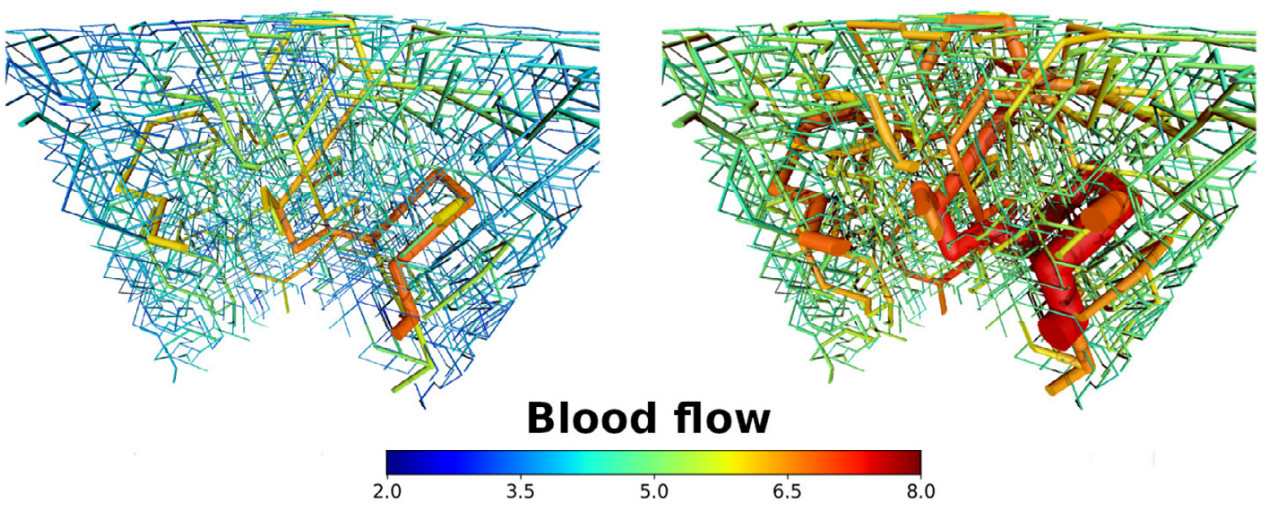AG — Prof. Heiko Rieger — Statistical Physics
Dynamic vessel adaptation in synthetic arteriovenous networks
Thierry Fredrich, Michael Welter, Heiko Rieger

Blood vessel networks of living organisms continuously adapt their structure under the influence of hemodynamic and metabolic stimuli. For a fixed vessel arrangement, blood flow characteristics still depend crucially on the morphology of each vessel. Vessel diameters adapt dynamically according to internal and external stimuli: Endothelial wall shear stress, intravascular pressure, flow-dependent metabolic stimuli, and electrical stimuli conducted from distal to proximal segments along vascular walls. Pries et al. formulated a theoretical model involving these four local stimuli to simulate long-term changes of vessel diameters during structural adaption of microvascular networks. Here we apply this vessel adaptation algorithm to synthetic arteriovenous blood vessel networks generated by our simulation framework "Tumorcode". We fixed the free model parameters by an optimization method combined with the requirement of homogeneous flow in the capillary bed. We find that the local blood volume, surface to volume ratio and branching ratio differs from networks with radii fulfilling Murray's law exactly to networks with radii obtained by the adaptation algorithm although their relation is close to Murray's law.
| Dynamic vessel adaptation in synthetic arteriovenous networks |
|
| J. Theor. Biol. 483, 109989 (2019) | [pdf], [bioRxiv] |
Legal notice (Impressum) Privacy policy



